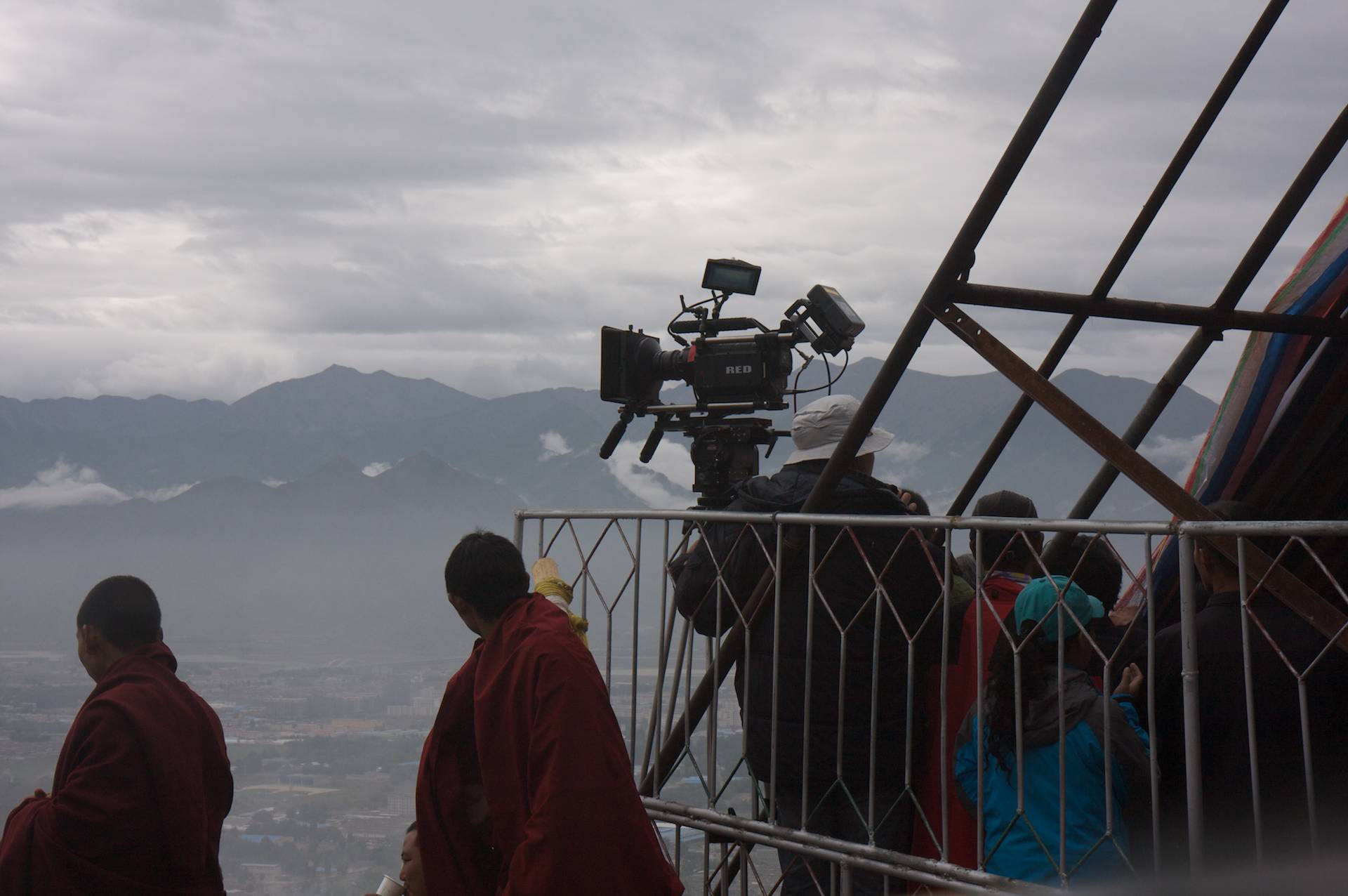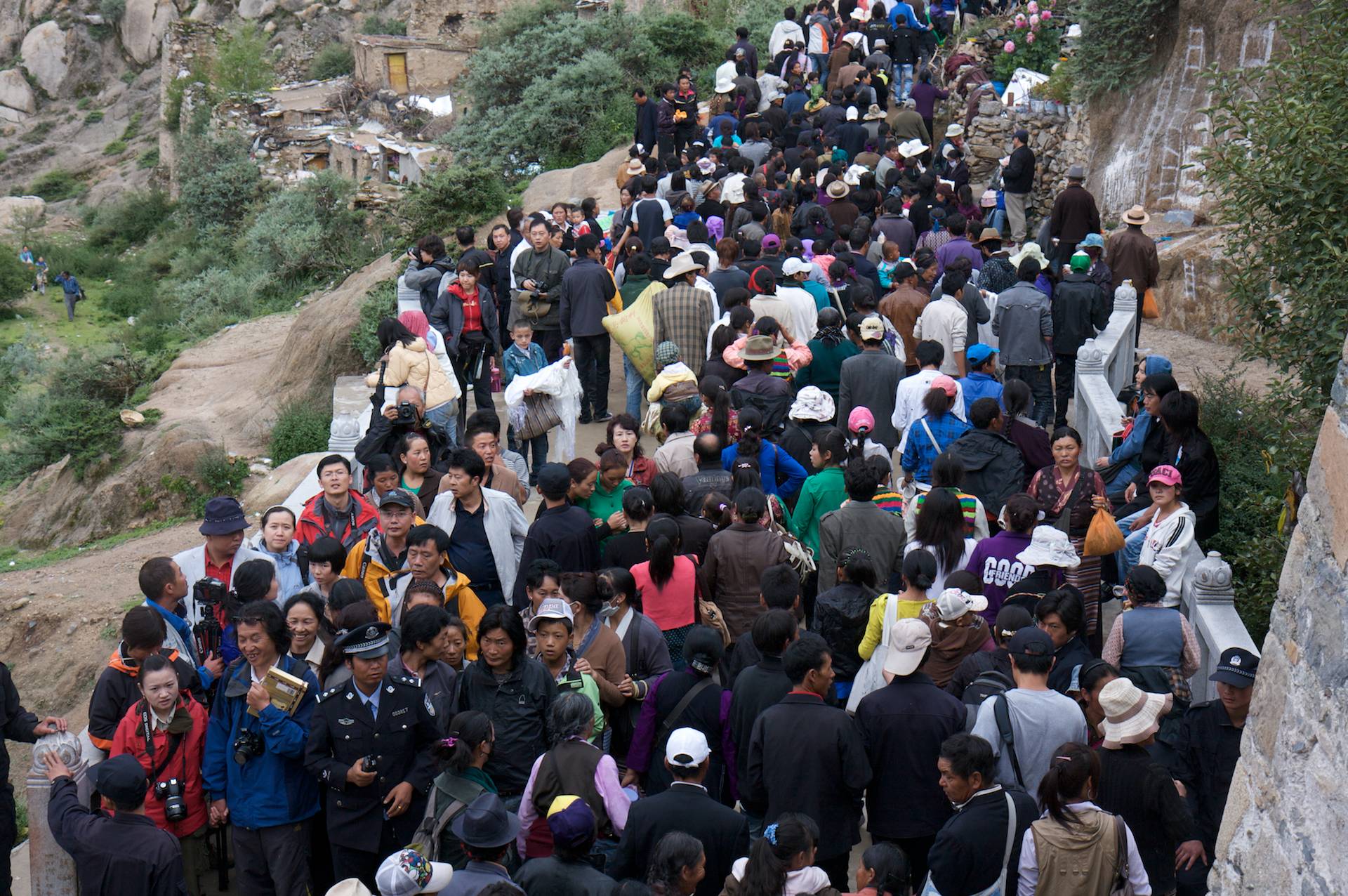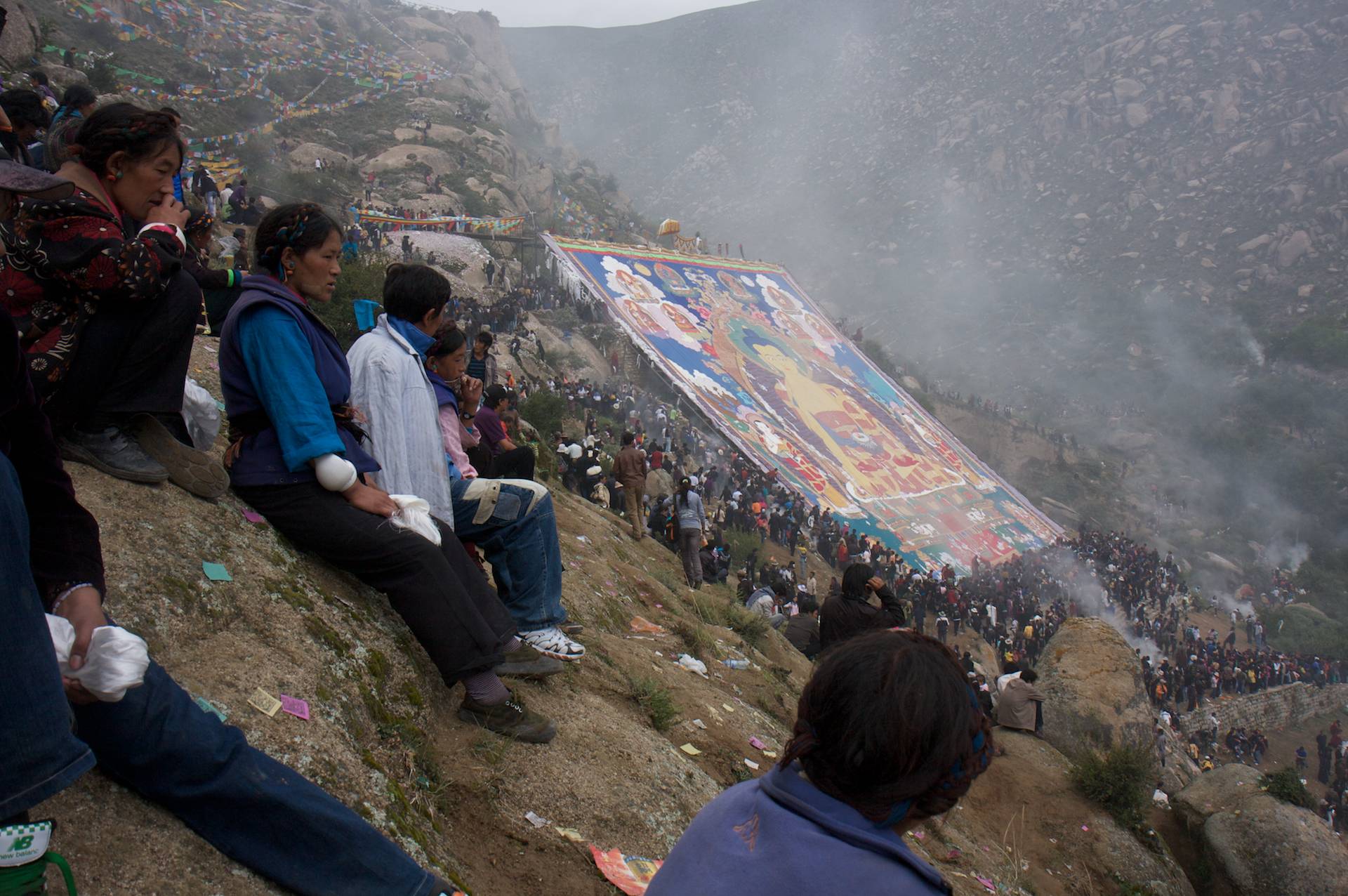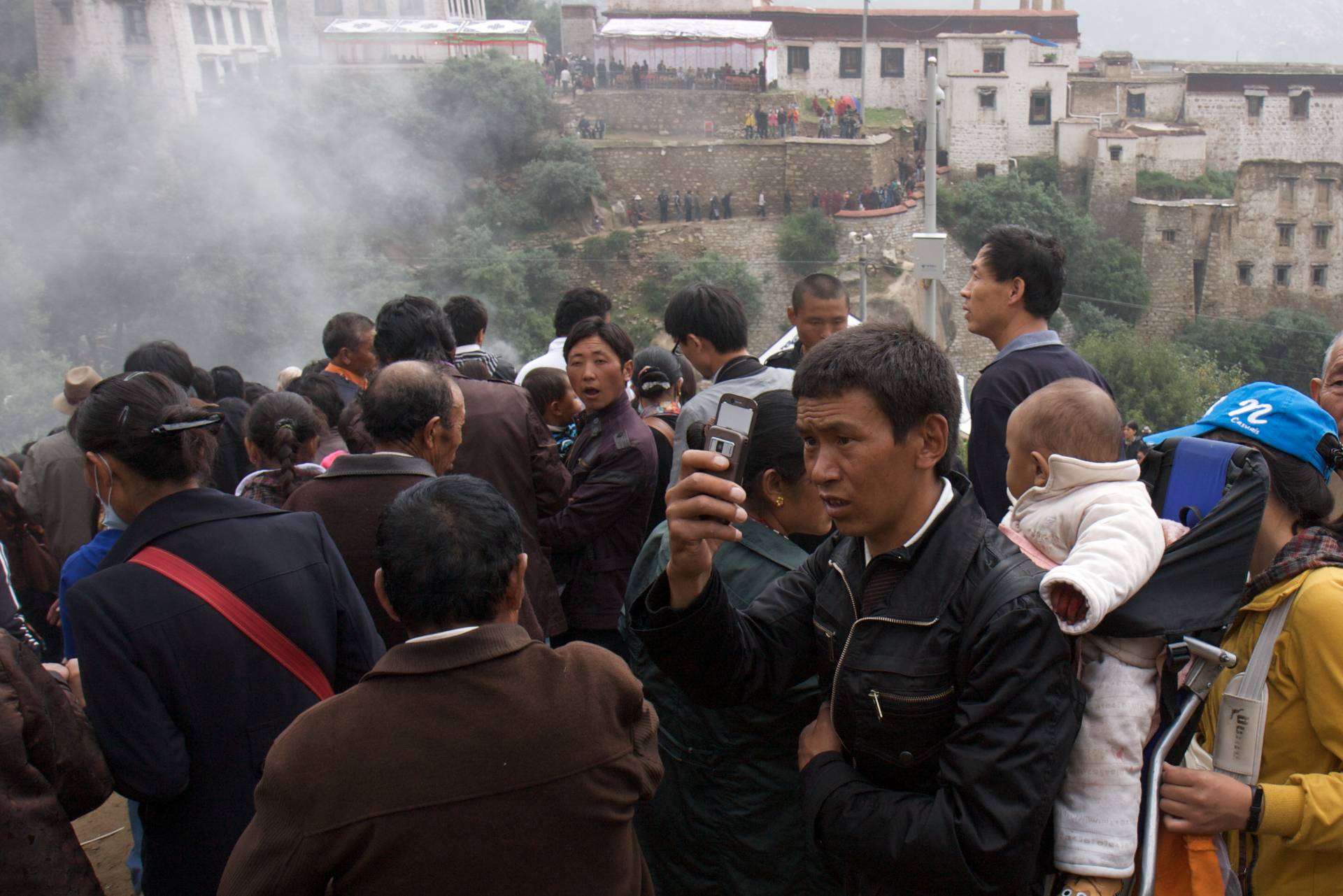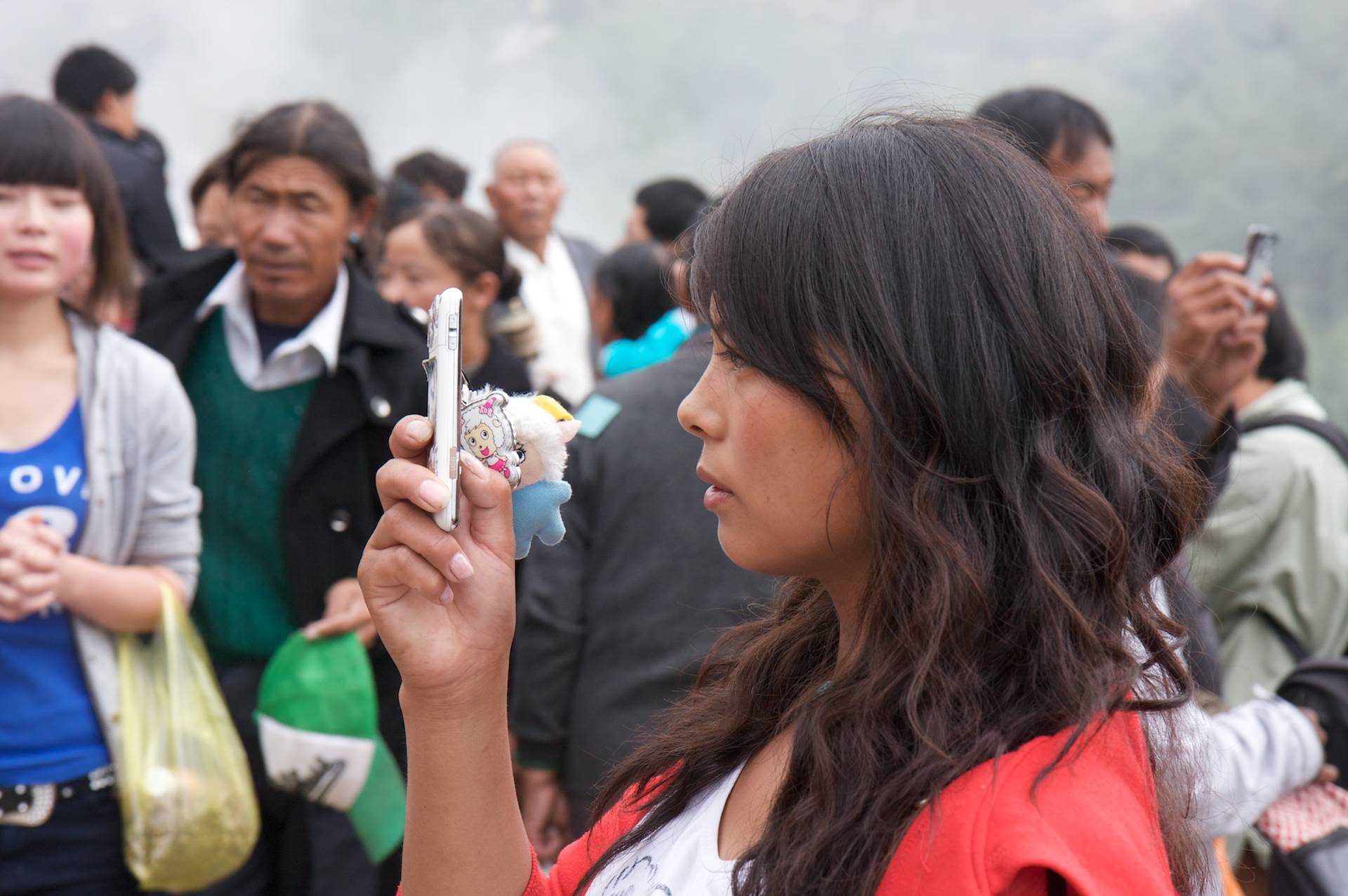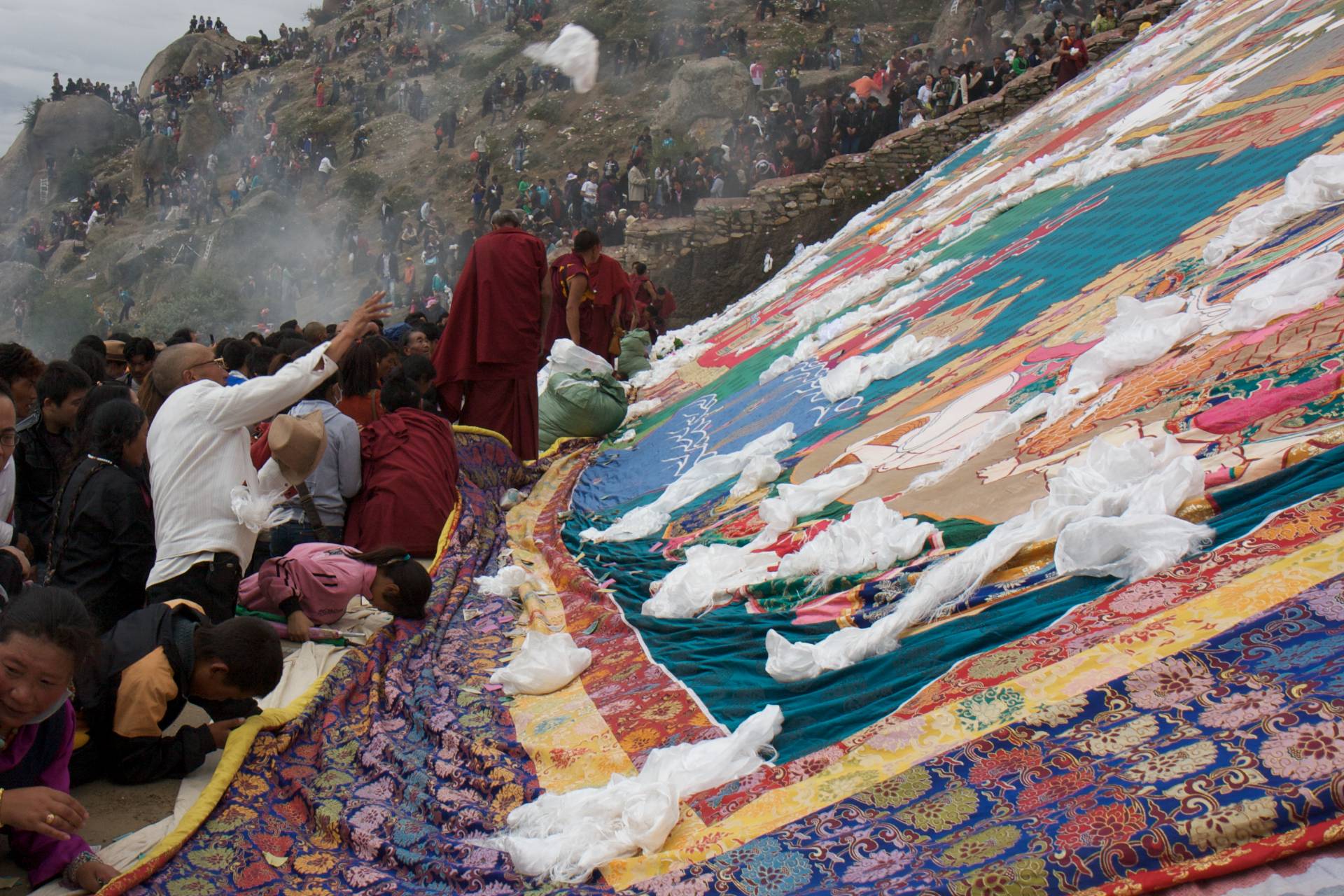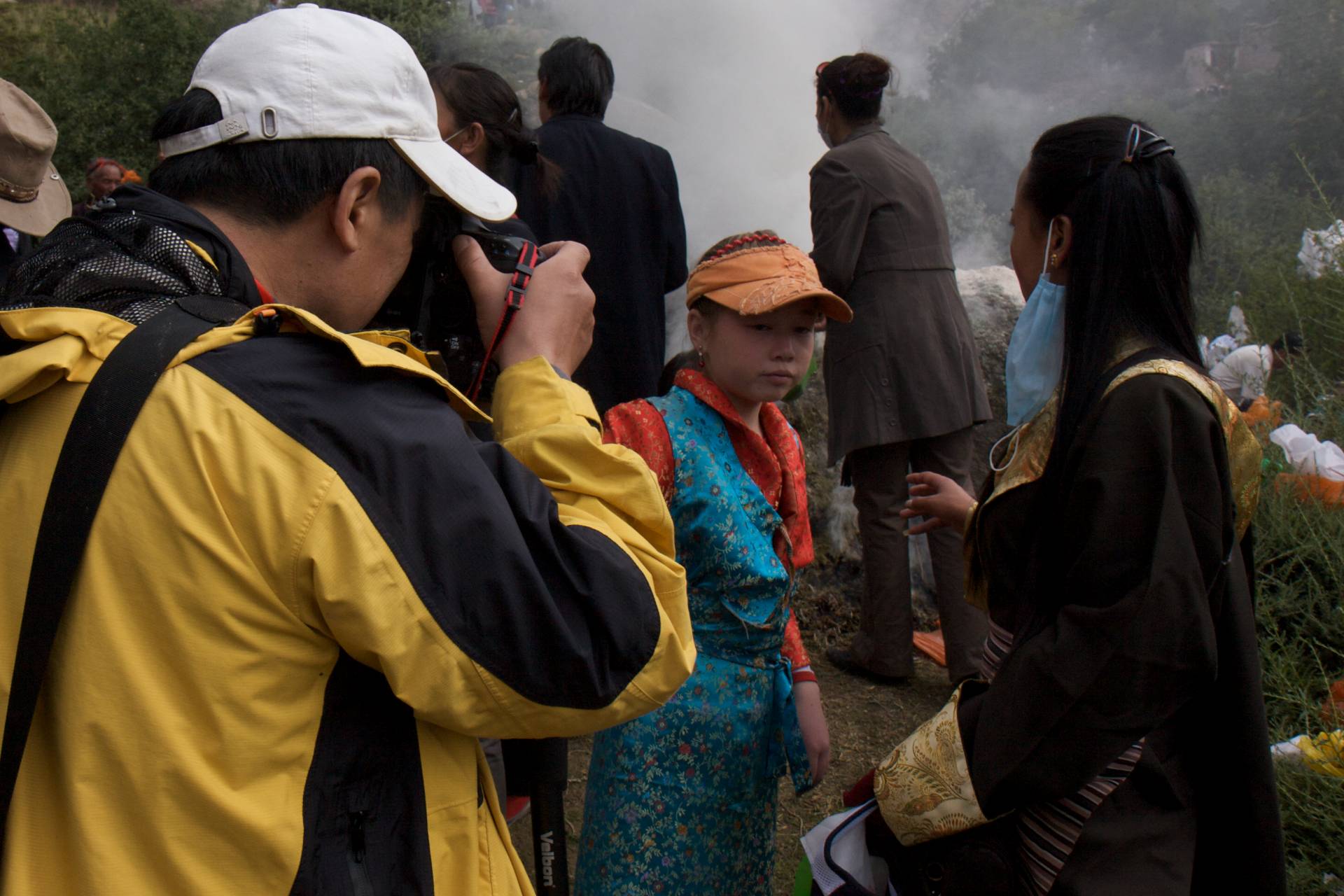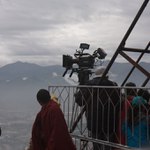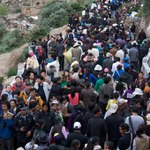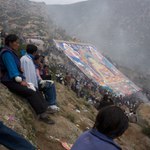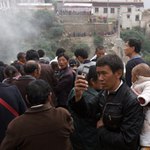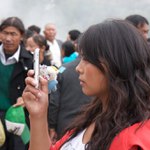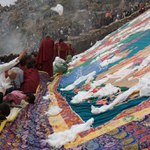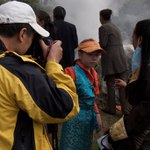Ritual Equipment
One more thing on Seeing Tibet.
These are images of the Shoton festival in Lhasa in 2009. The name Shoton derives from the custom of serving yoghurt to the monks of Drepung monastery coming back from their summer retreat. The festival starts with a spectacular ceremony at Drepung in which a huge thanka is unrolled. Shoton draws tens of thousands of Tibetans to Drepung and, over the subsequent days, to the Norbulinka, the summer palace, where performances of ache lhamo (Tibetan opera) take place.
Shoton was listed as Intangible Cultural Heritage in 2006 – the same year as the railway link to Lhasa was inaugurated. Within a few years, Shoton was transformed from just a Tibetan festival, tolerated by the authorities but without any strategic relevance, into a branded and protected key event to showcase China’s efforts to preserve Tibet’s cultural heritage, to attract tourists, and to promote business. As such, it draws extensive media coverage.
Since the advent of film and photography, ritual festivals have always been a favourite subject for visual documentation. Public rituals lend themselves well to observation through a camera’s lens. Today, it is hardly possible to find a monastic festival in the Tibetan world that is not being captured photographically.
One may argue that photography and film enhance a ritual’s stature by enlarging its potential audience. Others would say that ours is the age of spectacle and visual representation is often more important than the event itself. As visual documentation turns a ritual into a media event, representation supersedes reality and participation becomes consumption.
However, I think that cameras have become much more than mere devices to enhance, capture or consume events in real life. For many participants of a ritual festival, cameras have become integral to participation itself. They enable a form of personal involvement. Camera phones and online sharing render a social event not just into a media event – but into a social media event. In this sense, the lens has become a ritual object itself.
Privacy Policy
Plain and simple: I take the principle of minimal data collection serious and try hard not to collect or process any personal data beyond the basics required to serve and maintain the website.
Specifically,
- We do not use cookies.
- We do not use third party analytics.
- There is no contact form that would allow you to enter personal data.
- We do not use advertising to run this website.
In order to serve this website, your IP address and information about your browser, operating system and screen resolution need to be collected and processed. theotherimage.com is a simple, handcrafted, static website hosted by Netlify. It uses fonts by Adobe Fonts (formerly Typekit). Both Netlify and Adobe automatically collect usage data, either generated by the use of this website or from the service infrastructure itself. This data is used for accounting and analytic purposes as well as for technical maintenance by these two companies. Neither Netlify nor Adobe use cookies to track you. Specifics can be found in their respective privacy policies.
The videos on this website are hosted by Vimeo. Depending on your browser configuration, Vimeo may use cookies and other tracking technologies as stated in their respective privacy policies.
If you have any questions about this privacy policy, please write to: Martin Saxer, LMU Munich, Department of Social and Cultural Anthropology, Oettingenstr. 67, 80538 Munich, Germany.
This privacy policy has been updated on 30 December 2018.
![[ the other image ]](/images/logo/toi-logo_2x.png)
